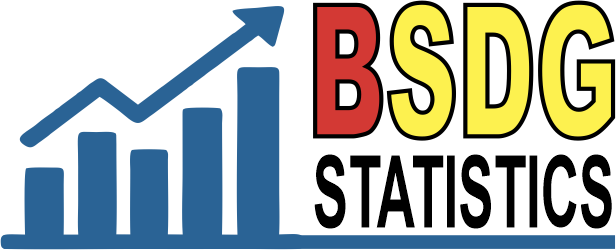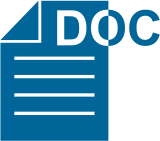VULCANO TEKTONIC DEPRESTION DI LAPANGAN PANAS BUMI SEMBALUN, LOMBOK TIMUR, NUSA TENGGARA BARAT
Abstract
Vulkano Tektonik yang terjadi pada Zaman Kuarter mengakibatkan Gunungapi tua Sembalun ini terbentuk sebuah kaldera pada bagian puncaknya. Pada saat ini lantai kaldera dengan ketinggian lebih dari 1000 meter diatas permukaan laut berupa dataran dan morfologi bergelombang lemah berada di sekitar Sembalun Bumbung dan Sembalun Lawang. Kaldera berbentuk tapal kuda
membuka ke arah utara bergaris tengah lebih dari 1 km. Satuan batuan tertua dibentuk oleh Satuan Lava Sembalun terdiri dari lava andesit, andesit piroksen (dominan) dan basaltik, serta breksi lava dan piroklastik sebagai hasil erupsi gunungapi tua Sembalun. Penyebarannya sepanjang satuan geomorfologi sisa tubuh gunungapi tua Sembalun, merangkai dari G. Pergasingan, G. Batujang, G. Anakdare, G. Asah, G. Seladare, G. Nangi, G. Bonduri dan G. Lelonten membentuk dinding Kaldera Sembalun. Satuan Endapan Aliran Piroklastik Sembalun merupakan hasil erupsi paroksisma Gunungapi tua Sembalun, menyebar ke arah barat, baratlaut dan berada di atas satuan lava Sembalun, serta di bukaan Kaldera Sembalun yang mempunyai ketebalan 10 – 15 meter. Satuan ini memiliki ciri warna putih kotor kekuningan sampai coklat kemerahan serta coklat gelap dan merah muda, melapuk kuat, tekstur breksi dengan matriks halus – kasar, banyak mengandung juvenile pumice yang melapuk
dengan diameter 5 – 30 cm. Sesar – sesar berkembang yang dikelompokkan menjadi Dinding Kaldera Sembalun, Kawah Propok, Sesar Normal Pusuk, Bonduri, Seribu, Tanakiabang, Lantih, Sesar Lentih, Orok, Libajalin, Batujang, Grenggengan dan Berenong.
Downloads
References
Chiodini, G., and Cioni,R., 1989, Gas geobarometry for hydrothermal systems and its application to some Italian geothermal areas, Applied geochemistry, Vol . 4, pp 465-472
Fournier, R.O., 1981. Application of Water Geochemistry Geothermal Exploration and Reservoir Engineering, “Geothermal System: Principles and Case Histories”. John Willey & Sons. NewYork.
Giggenbach, W.F., 1980, Geothermal gas equilibria, Geochimica et cosmo-chimica Acta, Vol 44, pp 2021-2032
Giggenbach, W., Gonfiantini, R., and Panichi, C., 1983, Geothermal Systems. Guidebook on Nuclear Techniques in Hydrology, Technical Reports Series No. 91. International Atomic Energy Agency, Vienna
Giggenbach, W.F., 1988. Geothermal Solute Equilibria Deviation of Na-K-Mg-Ca Geo-Indicators.Geochemica Acta 52. pp. 2749 – 2765.
Giggenbach, W.F., and Goguel, 1988, Methods for tthe collection and analysis of geothermal and volcanic water and gas samples, Petone New Zealand
Lawless, J., 1995. Guidebook: An Introduction to Geothermal System. Short course. Unocal Ltd.Jakarta.
S.Andi Mangga, S.Atmawinata, B.Hermanto &T.C.Amin, 1994. Geologi Regional Lembar Lombok, Nusatenggara, skala 1: 250.000. Pusat Penelitian dan Pengembangan Geologi, Bandung,Indonesia.
S.Herry, Nasution A., Simanjuntak J. 2000. Sembalun Bumbung geothermal area, Lombok Island,West Nusatenggara, Indonesia ; An Integrated Exploration. Proceeings world geothermal congress. Kyushu, Japan.
Tim Survei Terpadu (Geologi, Geokimia dan Geofisika) Panas Bumi, 2006. Laporan Survei Terpadu Daerah Panas Bumi Sembalun, Lombok Timur, Nusa Tenggara Barat, Pusat Sumber Daya Geologi, Bandung.
Copyright (c) 2018 Buletin Sumber Daya Geologi

This work is licensed under a Creative Commons Attribution-NonCommercial-ShareAlike 4.0 International License.
Authors whose manuscripts are published agree to the following terms:
The publication rights of all journal manuscript materials published on the Buletin Sumber Daya Geologi website are held by the editorial board with the knowledge of the author (moral rights remain with the manuscript’s author).
The formal legal provisions for access to digital articles in this electronic journal are subject to the terms of the Creative Commons Attribution-ShareAlike (CC BY-SA) license. This means that Buletin Sumber Daya Geologi has the right to store, convert media/formats, manage in the form of a database, maintain, and publish the article without requesting permission from the author, as long as the author’s name is cited as the copyright holder.
Manuscripts published in both print and electronic formats are open access for educational, research, investigative, and library purposes. Beyond these purposes, the editorial board is not responsible for any violations of copyright law.















